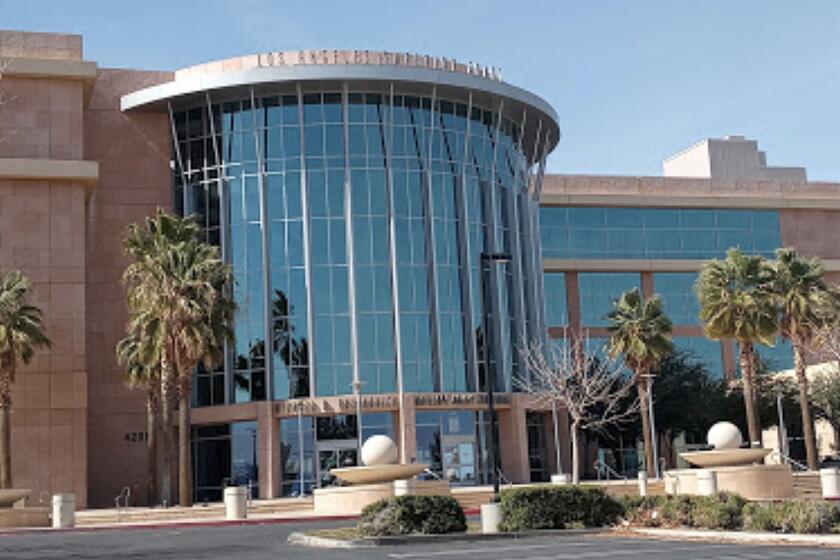San Fernando : A Tiny Town With Lots of Character
- Share via
One of the most historic locations in the Valley, the city of San Fernando has changed a lot since its days as a railroad boom town, when lots sold for $150 each. Yet despite being surrounded entirely by Los Angeles, San Fernando has managed to retain the feel of a small town: The city’s outdoor shopping district, is an virtual anomaly in the mall-crazy Valley. And the rustic flavor of its politics--in which candidates for city office rely on friends and relatives rather than paid consultants--also separates it from its gargantuan neighbor.
San Fernando is not without its own big city-like problems, however. Gangs and grafitti, and the January firing of parks director Jess Margarito for alleged misuse of his office have blemished the city’s once-pristine reputation.
Although San Fernando has always had a sizable Latino population, there has been a major population shift in the past decade, with a 35% drop in the white population and a 53% rise in the number of Latinos. Since 1986, the five-member City Council has had a Latino majority, mirroring its changing face.
History
Name: Like the Valley itself, the name for the city comes from the San Fernando Mission in nearby Mission Hills, founded on September 8, 1797, with Father Fermin Francisco de Lasuen in charge. Named Mision San Fernando Rey de Espana in honor of Ferdinand III, King of Castille and Leon in the 1200s, the mission was the Valley’s social and economic center of activity until its secularization in the 1830s.
The beginning: San Fernando was established Sept. 15, 1874, when Charles Maclay--who with George K. Porter had purchased the entire northeast Valley months earlier--submitted a township map to the Los Angeles County recorder. With help from the Southern Pacific Railroad, which completed a rail line through the new town the same year, Maclay’s plans to create a town came true. And when the railroad completed its northward movement, linking Los Angeles and San Fernando to the rest of the nation, the city continued to grow.
Growth: With growth came plans for incorporation, and on August 31, 1911, San Fernando became the second incorporated city in the Valley (Burbank was the first several months earlier). Yet unlike many nearby communities following the completion of the Los Angeles Aqueduct in 1913, San Fernando had its own supply of well water and thus did not succumb to annexation to Los Angeles.
Community Issues
Rebuilding: Rebuilding after the Northridge earthquake is the main issue in San Fernando. The little city suffered $31.5 million in property damage, including potentially crippling blows to 63 buildings--the San Fernando Superior Courthouse among them--and serious damage to 835 others. Luckily, the conservatively managed city had money in its coffers, and should be able to get by on budget reserves, according to City Administrator Mary Strenn. The effect on San Fernando businesses, however, remains to be seen.
Pipeline: The controversy surrounding the Four Corners oil pipeline, which ruptured in eight places during the Northridge earthquake--including a fracture that fueled a large fire beside O’Melveny Elementary School--has become the most high-profile issue in the campaign for the upcoming April 12 City Council election. A complex jurisdictional nightmare, the pipeline has puzzled the city’s officials, all of whom want the pipeline out, but are uncertain what they can do to have it removed or rerouted.
Community Profile
Based on 1990 U.S. Census figures.
Stats
Size: 2.4 square miles
Population: 22,580
Median Age: 26.3
Average home value: $160,324
Number of households: 5,600
Average number of persons per household: 4.4
Population over 25 with bachelor’s degree: 3.6% (L.A. County: 22.3%)
Population below poverty level: 17.7%
Income
Average household income is lower than the Los Angeles County average.
San Fernando: $35,448
Los Angeles County Average: $47,252
Northeast Valley: $44,444
Southeast Valley: $48,182
Northwest Valley: $56,427
Southwest Valley: $61,722
Ethnicity
Latino: 82%
White: 15%
Asian: 1%
African American: 1%
Sources: California Place Names; The San Fernando Valley, Then and Now; California: Cities, Towns, and Counties; 1990 U.S. Census data; Research by MIGUEL BUSTILLO / Los Angeles Times
More to Read
Sign up for Essential California
The most important California stories and recommendations in your inbox every morning.
You may occasionally receive promotional content from the Los Angeles Times.










